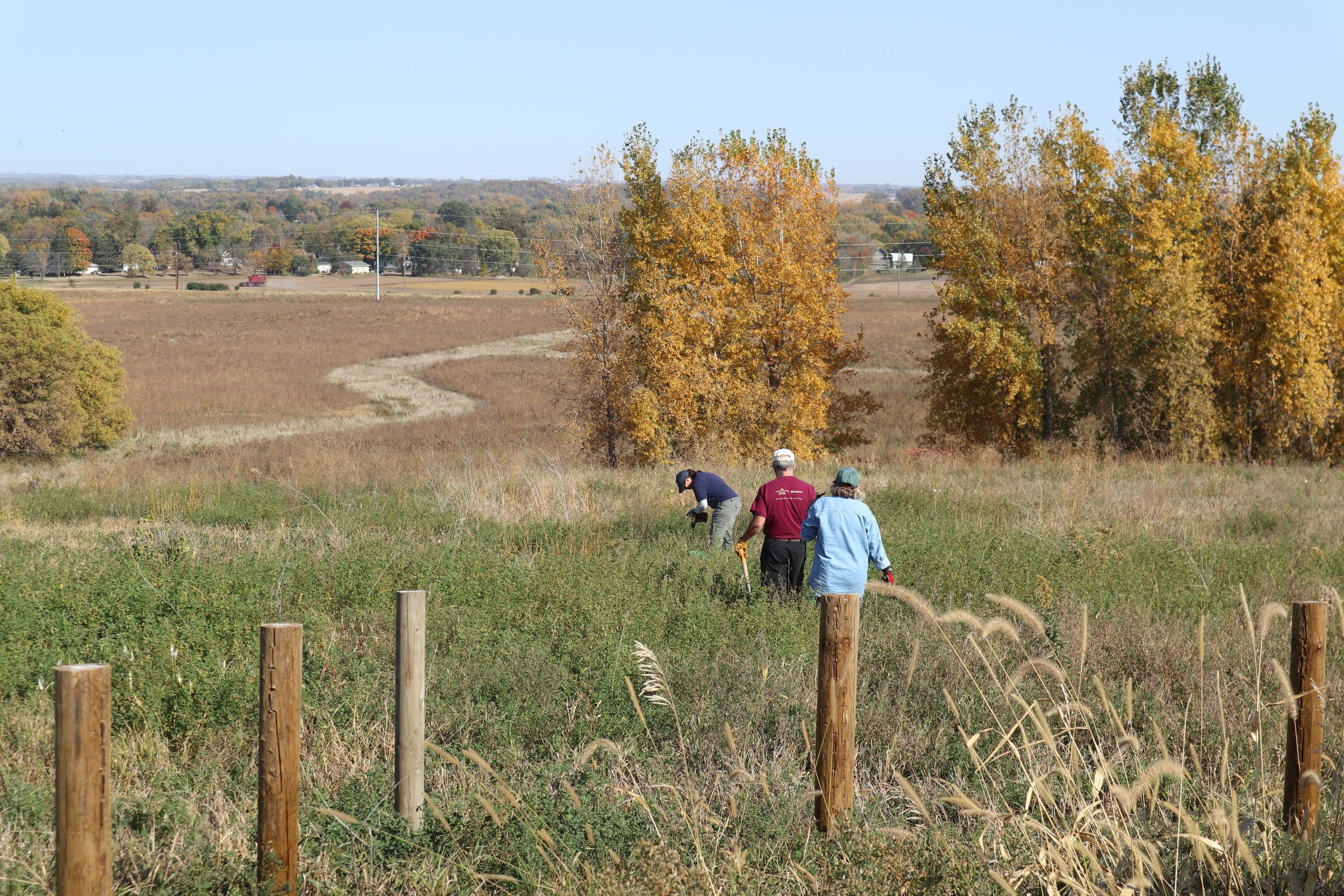
Habitat Protection
We partner with organizations and landowners to preserve land, restore critical habitat, and increase public access.
Header photo by Hannah Robb.
-
Protection
Most of southeast Minnesota, including the Cannon River watershed, is privately owned and used for development or farming, resulting in habitat loss and challenges to water quality. Our work in protecting and restoring natural habitats in the watershed helps support biodiversity and environmental health. It contributes to the overall quality of life for both wildlife and humans, as healthy habitats provide essential ecosystem services such as clean water, fresh air, and flood control. We protect habitat by connecting with residents interested in preserving their land and our partners, Trust for Public Land, to acquire the land for habitat restoration and public use.
-
Restoration
Minnesota has experienced a loss of around 50% of its wetlands, 40% of its forests, and more than 98% of its prairies due to development and agriculture. This loss has led to decreased biodiversity and worsened water quality. We are actively engaged at the local level to help mitigate these effects in our watershed by partnering with Great River Greening for community-based stewardship. Some habitat restoration efforts involve removing invasive species, sowing seeds, and planting trees, which help these ecosystems become more stable and resilient and can assist wildlife populations in recovering and growing, giving them a better chance of survival.
-
Public Access
While safeguarding natural habitats is vital, having convenient access to nature nearby can greatly enhance our physical and mental well-being. Spending time outdoors improves cognitive functions, including thinking and reasoning, and participating in outdoor activities can alleviate stress and anxiety. Although much of the watershed is rural, it is accessible within an hour’s drive for 3.4 million people. Even though public ownership accounts for less than 5% of the land in this area, these outdoor spaces offer hunting, fishing, hiking, and other recreational opportunities, allowing over half of all Minnesotans to connect with nature.
Story Highlight: Restoring Nature and Building Community
The Sakatah WMA: In-Yan Bo-Sda-Ta Wa-Kpa Unit in Minnesota is a 160-acre sanctuary dedicated to preserving wildlife and honoring the Meyers family's legacy. Ongoing restoration efforts enhance its ecosystems, supporting diverse habitats and community engagement.
Our Partnership and the Lessard-Sams Outdoor Heritage Council (LSOHC)
We are part of a long-term collaborative conservation project to acquire and restore land for protection and public access. Our partnership involves our organization, a local partner with community ties, Trust for Public Land for land acquisition expertise, and Great River Greening for restoration experience. Together, we protect and restore specific parcels of land that contribute to larger forests, prairies, wetlands, lakeshores, and river shorelines. So far, we have protected 18 areas in the Cannon River watershed, totaling over 3,100 acres, and have restored or improved 498 acres, with more work in progress.
This work is supported through funding from the Lessard-Sams Outdoor Heritage Council, which was established by the legislature to provide annual funding recommendations to the legislature from the Outdoor Heritage Fund. The Outdoor Heritage Fund, one of four funds created by the Clean Water, Land, and Legacy Amendment, receives one-third of the money raised by the tax increase.
Project Spotlight: Cannon River
Fish Passage
Clean River Partners is working with the Minnesota Department of Natural Resources and Bolton & Menk on a project to modify the Lower Sakatah Lake Dam and Gorman Lake Dam to rock arch rapids and replace the Dodd Road culvert to facilitate fish passage in the Cannon River Watershed.
Protection & Restoration Sites
Our Partners in Habitat Protection
Are you interested in preserving your land?
We are working with Minnesota Residents to protect tomorrow’s landscape, one acre at a time.
In Steele County, Don and Sue Redman took important steps to protect 153 acres of land near the Straight River, helping establish the Medford Wildlife Management Area. Their commitment to conservation has improved access to hunting, fishing, and wildlife viewing, while also creating opportunities to restore critical habitat for a nearby threatened species.
Through our habitat protection program, you can safeguard the resources on your property while creating public access for all Minnesotans. Please contact our team to learn more.
Questions?
Contact Anna Holman (she/her), our
Conservation Program Manager, Habitat
anna@cleanriverpartners.org
(507) 200-8219











